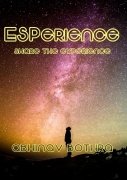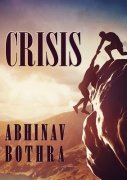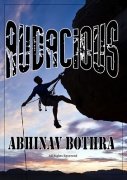Reviews of products by Abhinav Bothra
3 ★★★★★ reviews
1 ★★★★★ reviews
ESPerience X
Overall customer rating: ★★★★★reviewed by Marc Rehula (confirmed purchase)
Rating: ★★★★★ (Date Added: Wednesday 13 November, 2024)
 This routine is very interesting, but what you get is a little weird. The pdf and the video are both incomplete; you need both to piece the explanation together. And that explanation is rather spare - you'll need to find a way to 'explain' why the cards are blank in the end (for example, why do they hallucinate?). So the trick is worthwhile, but the magic? - some assembly is required.
This routine is very interesting, but what you get is a little weird. The pdf and the video are both incomplete; you need both to piece the explanation together. And that explanation is rather spare - you'll need to find a way to 'explain' why the cards are blank in the end (for example, why do they hallucinate?). So the trick is worthwhile, but the magic? - some assembly is required.
ESPerience
Overall customer rating: ★★★★★reviewed by Alfred Rivera (confirmed purchase)
Rating: ★★★★★ (Date Added: Sunday 25 April, 2021)
 The instructions hardly make any sense and are very confusing. I'm glad it was only five bucks! This was a total waste of money. The instructions are very unclear. They do not guide you with clarity. Lybrary should drop this item.
The instructions hardly make any sense and are very confusing. I'm glad it was only five bucks! This was a total waste of money. The instructions are very unclear. They do not guide you with clarity. Lybrary should drop this item.
SharPen
Overall customer rating: ★★★★★reviewed by Fred Rosenbaum (confirmed purchase)
Rating: ★★★★★ (Date Added: Thursday 13 September, 2018)
 This is a cute little effect, definitely close up, probably 1 on 1 is best. It will take some arts and crafts, finding the right pen and finding the correct 'thing' to use in the construction. But once it is made it should last a long time. You can't write with the pen and you can't hand it out. My guess is that very few people will actually do the work to construct it, but you really should. And you can't beat the price so check it out.
This is a cute little effect, definitely close up, probably 1 on 1 is best. It will take some arts and crafts, finding the right pen and finding the correct 'thing' to use in the construction. But once it is made it should last a long time. You can't write with the pen and you can't hand it out. My guess is that very few people will actually do the work to construct it, but you really should. And you can't beat the price so check it out.
Crisis
Overall customer rating: ★★★★★reviewed by Christian Fisanick (confirmed purchase)
Rating: ★★★★★ (Date Added: Tuesday 14 February, 2017)
 Crisis is a set of four routines using currency, Post-it notes, and a Sharpie. That's it. Minimalism at its best. Let's get right to the point, as the author candidly admits, that there's really nothing new here. And there isn't.
Crisis is a set of four routines using currency, Post-it notes, and a Sharpie. That's it. Minimalism at its best. Let's get right to the point, as the author candidly admits, that there's really nothing new here. And there isn't.
Game is a prediction of what the result of three rounds of "which hand" will be. Lots of people do this--and Marc Paul taught it on his classic, but now out-of-print, Mind2Mind DVD. Bothra does make fairly cool use of two Post-it notes for his MOs prediction. The technique, though, reminded me a lot of Gerard Zitta's somewhat similar "Janus."
Location is another effect done by a lot of mentalists. It kind of resembles the commercial effect Espionage in predicting the location of objects using a variation of the Free Will Principle by Deddy Corbuzier,,
O Dear is a Post-it note version of Dead or Alive. I've seen a similar routine on a Dan Harlan video, as well as in Julian Moore's epic masterpiece on all the things you can do with Post-it notes, Post-Justify.
4 Thoughts is a straight OA Mental Epic with four folded slips of paper. The only thing that I hadn't seen before was the force that he suggests for the fourth choice. It's different, but it's not necessarily better than what folks usually use.
Overall, this is not a bad little ebook. I do variations of all four of these routines because they are classics and pretty effective. Richard Osterlind's working of the OA principle used in 4 Thoughts is much superior, and the only way that I do that routine. The book comes with a short, somewhat error-ridden, but overall helpful MP4 file.
Audacious
Overall customer rating: ★★★★★reviewed by Max Caig
Rating: ★★★★★ (Date Added: Sunday 23 February, 2014)
 Just would like to point-out that this book is mainly directed towards stage mentalism. The only thing that can be done closeup is Stop. Time frame and Behind my back are really clever. And you may find havoc intimidating as i did, but be cautious that practically you cant look into someones mind, there has to be a method either easy or hard.
Just would like to point-out that this book is mainly directed towards stage mentalism. The only thing that can be done closeup is Stop. Time frame and Behind my back are really clever. And you may find havoc intimidating as i did, but be cautious that practically you cant look into someones mind, there has to be a method either easy or hard.